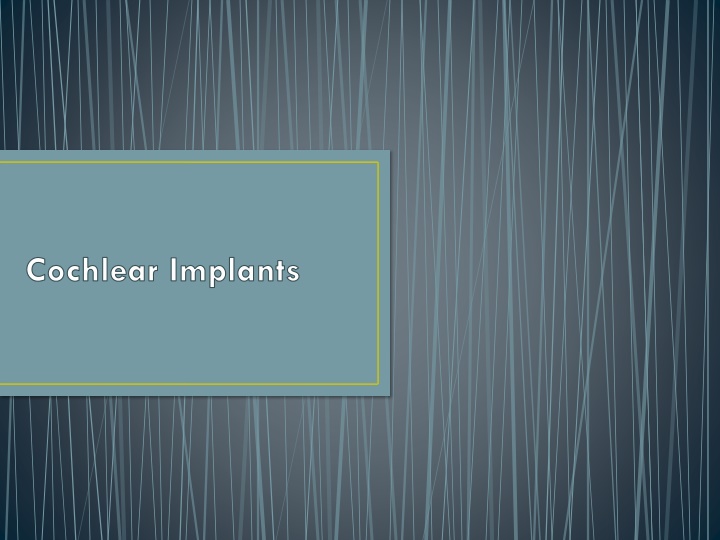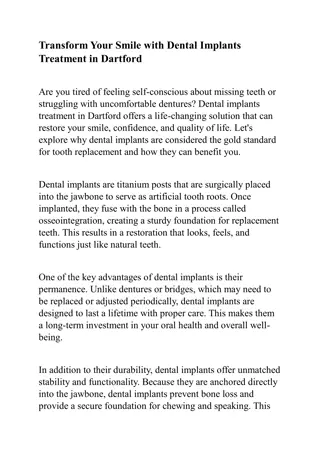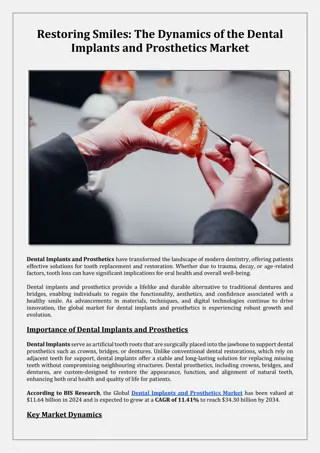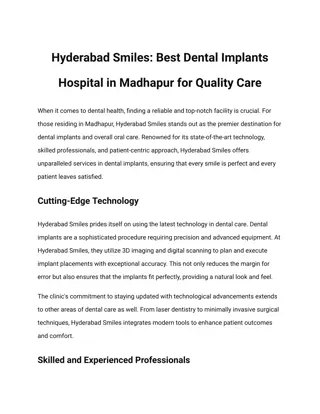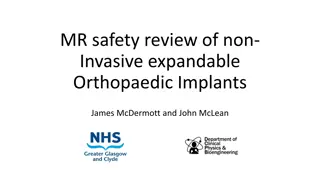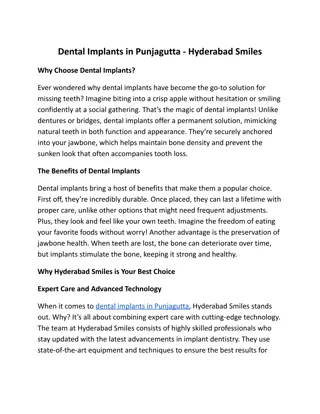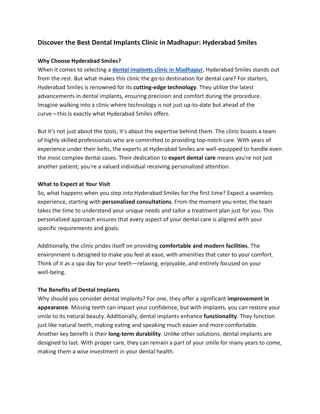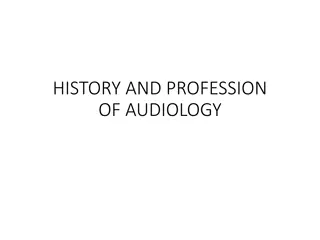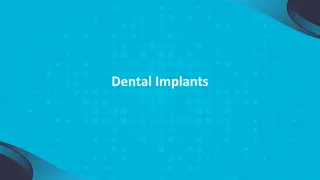Cochlear Implants
Cochlear implants are surgically implanted devices that deliver electrical stimulation in the ear, helping severely deaf individuals. This technology involves both internal and external components, with electrodes stimulating nerves in the cochlea. Success of cochlear implants is influenced by factors like duration of deafness, age at onset, implant usage, cochlear health, and learning speed.
Download Presentation

Please find below an Image/Link to download the presentation.
The content on the website is provided AS IS for your information and personal use only. It may not be sold, licensed, or shared on other websites without obtaining consent from the author.If you encounter any issues during the download, it is possible that the publisher has removed the file from their server.
You are allowed to download the files provided on this website for personal or commercial use, subject to the condition that they are used lawfully. All files are the property of their respective owners.
The content on the website is provided AS IS for your information and personal use only. It may not be sold, licensed, or shared on other websites without obtaining consent from the author.
E N D
Presentation Transcript
What is a Cochlear Implant? It is a surgically implanted device that delivers electrical stimulation within the ear. It contains both internal & external parts. External Parts: Microphone Transmitter coil Speech Processor Internal Parts Electrodes Receiver/Stimulator
Where are the parts located? The electrodes are surgically implanted in the cochlea, where they stimulate the nerves. The receiver is implanted just below the skin behind the ear. A magnet holds the coil in place next to the implanted surgical system. The microphone & processor may be behind the ear or may be worn in a pocket, belt pouch, or harness.
Who uses implants? It can help severely or profoundly deaf adults & children who get little or no benefit from hearing aids. Those who experience deafness from nerve damage may benefit from the implant.
How does the implant work? The microphone picks up the sound. The processor converts the sound to an electrical signal and sends it to the coil. The signal is transmitted to the implanted receiver by radio waves. The receiver sends the signal to the electrodes implanted in the cochlea. The electrodes stimulate the nerves in the cochlea.
Videos about Implants: How a Cochlear Implant Works Cochlear Implant Surgery Thomas Jefferson 29 years old and hearing myself for the 1sttime
What determines the success? How long the person has been deaf How old the person was when they became deaf (pre- lingual or post-lingual) How long they have had the implant (if they actually use it and if they can make sense of the information from the implant) Health of the cochlea Age when they got the implant How quickly they learn
What determines the success? How good their support system is How hard they work on speech therapy
Benefits Can hear (duh!) Can watch tv without captions Can use a regular telephone Can enjoy music Possibility for better education, better jobs Easier for hearing parents
Medical Risks General anesthesia risks some have serious side effects Injury to facial nerve near implant site Infection Dizziness/vertigo Tinnitus Taste disturbances Meningitis infection of the lining of the brain Numbness around the ear
Other drawbacks, arguments Implant might not work Expensive Destroys hearing completely Some say it s not natural Some believe it s not moral against God s design Hours of speech therapy required Supposed to give up signing depend on implant Some believe it destroys Deaf culture
Miscellaneous Info Children should be implanted 10 months to 2 years, during optimal time for learning language Ear with least residual hearing is implanted because it destroys any hearing you have Implants don t make someone a hearing person People hear implant sounds differently Implants must be removed before showering, swimming, etc.
Miscellaneous Info Cost is approximately $65,000. N.A.D. recommends parents look at every aspect before making a decision. Talk to doctors, deaf people, implanted patients, etc.
Conclusion: There is not one right answer for every situation. Many factors must be considered before making the decision about an implant.
